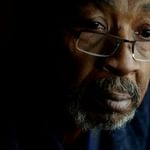

Three death-row exonerees, including two who became symbols of the risks of wrongful capital convictions, died in 2015. David Keaton (pictured, far left), the first man exonerated from death row in the modern era of the death penalty, died on July 3 at the age of 63. A teenaged Keaton was sentenced to death in Florida in 1971 for the murder of an off-duty police officer. His conviction was based upon a coerced confession and erroneous eyewitness testimony. Keaton was exonerated in 1973 when new evidence revealed the actual perpetrator. Glenn Ford (pictured, left), who was exonerated in 2014 after spending nearly 30 years on Louisiana’s death row, died of lung cancer on June 29 at age 65. Ford was tried before an all-white jury, represented by appointed counsel who had never handled a criminal case. He was convicted despite the absence of any evidence linking him to the murder weapon, when prosecutors failed to disclose that confidential informants had identified two other men as the murderers. They ultimately admitted that “credible evidence” showed that “Ford was neither present at, nor a participant in,” the murder. Death-row exoneree Andrew Golden, who spent 26 months on Florida’s death row from 1991 to 1994, died in May. Golden had been wrongly convicted of murdering his wife although police investigators and the medical examiner had testified that the evidence did not suggest foul play. At least four other death-row prisoners who may have been wrongfully condemned — Lester Bower, Brian Keith Terrell, Donnis Musgrove, and Ronald Puksar — were executed or died on death row before judicial review of their cases were complete.
Bower was executed in Texas on June 3 despite maintaining his innocence throughout the 30 years he spent on death row. After three trials and 23 years, Georgia executed Terrell on December 9. It took execution personnel an hour to find a vein and, as the execution drug was being administered, Terrell mouthed the words: “Didn’t do it.” Musgrove died of lung cancer on Alabama’s death row on November 25, while his claim of innocence was pending before a federal district court judge. His case was tried by the same prosecutor before the same judge, and with questionable weapons testimony from the same ballistics expert involved in the case of Anthony Ray Hinton, who was exonerated earlier in 2015. Puksar died on March 30, after 22 years on Pennsylvania’s death row. He was condemned for the shooting deaths of his brother and sister-in-law, even though the forensic pathologist who conducted the autopsies in 1991, Dr. Neil A. Hoffman, concluded that the killings had been a murder/suicide. After the jury found him guilty, Puksar directed his trial lawyer not to introduce any mitigating evidence in the penalty phase, saying he had not committed the murders and had nothing to mitigate. After Puksar’s death, Dr. Hoffman said “I believe the case was a miscarriage of justice.”
(Dana Spiotta, “The Lives They Lived: Glenn Ford, All Alone,” The New York Times Magazine, December 28, 2015; G. Ensley, “Quincy Five’s Keaton, exonerated from Death Row, dies,” Tallahassee Democrat, July 8, 2015; Mike Urban, “Convicted Killer Ronald Puksar Dies in Prison,” Reading Eagle, April 3, 2015.) See Innocence.



